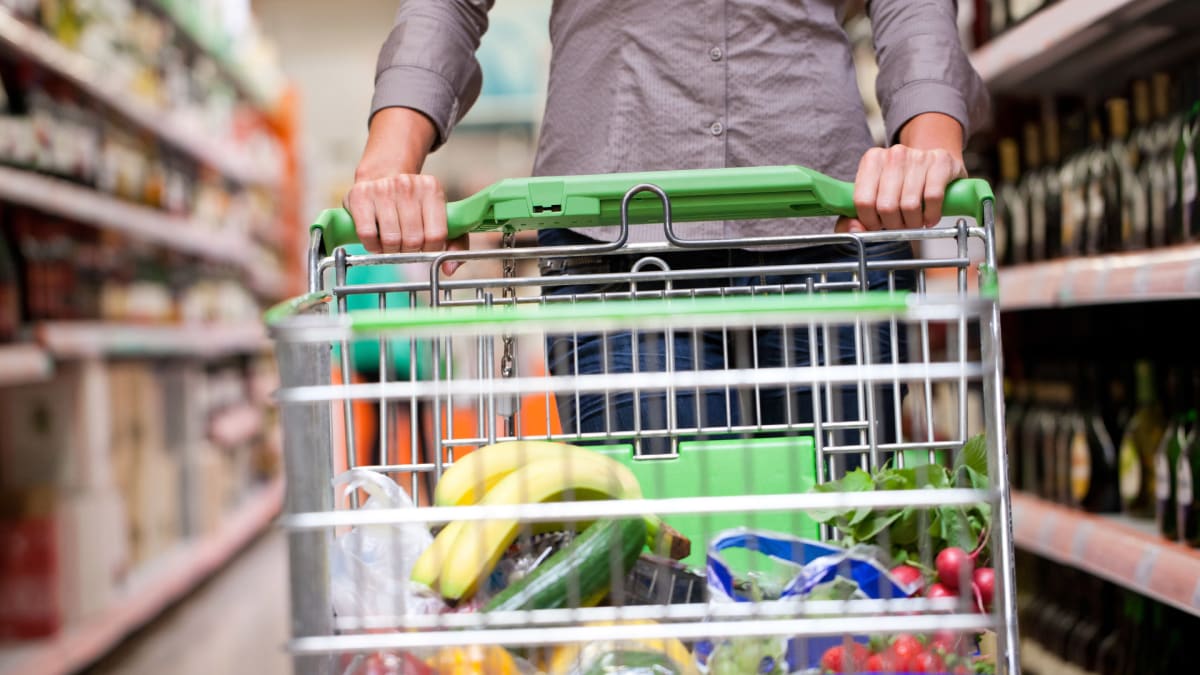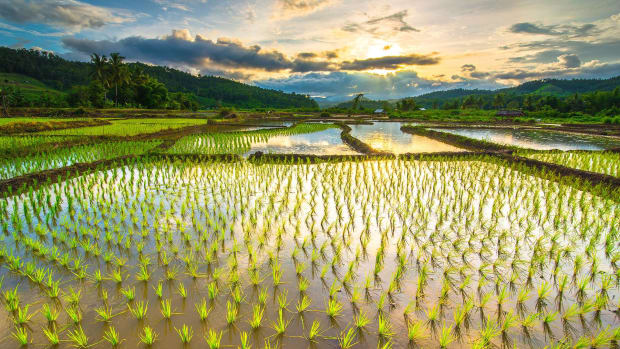
When it comes to the soaring cost of food, few staples have been talked about quite as much as eggs — amid both an avian flu outbreak and regular food inflation, cost of the food staple was up more than 70% in March from a year ago.
The situation got such that a number of new businesses started renting out chickens and coops and billing it as a way for families to be "independent" of global egg supply and production.
DON'T MISS: Yes, Eggs Are Expensive. Here's Why.
The term "eggflation" has now become a catch-all term for rising food prices but, according to a recent report, another staple may soon be subject to some of the most drastic price hikes.

Shutterstock
'Decade-High Rice Prices' Not Easing Up, Analyst Says
While the wider cereal category that also includes rice and pasta rose by 12.3% in the U.S. between 2022 and 2023, the grain that feeds 3.5 billion people around the globe is expected to remain high amid decreased supplies and hampered production.
When it comes to global supply, rice is typically measured in hundredweights (CWT). One CWT is roughly 112 pounds and, according to Fitch Solutions, has been at a record-high average of $17.30 throughout 2023.
That number hovered at $13 throughout 2021 but, amid a war in Ukraine and global warming-induced flooding across much of China and Pakistan, expected to not ease below $14.50 for much of 2024.
"At the global level, the most evident impact of the global rice deficit has been, and still is, decade-high rice prices," Fitch Solutions Commodities Analyst Charles Hart writes in a report first dug up by CNBC.
As rice is the core grain feeding nearly half of the world's population, the rising prices risk adversely affecting food security in large parts of Asia and the South Pacific.
Here's Where Food Inflation Is Hitting The Hardest
Even in places that have traditionally relied on wheat, demand for rice as a more affordable grain is on the rise amid the war in Ukraine. At one point, the Eastern European country had made up 9% of the world's wheat export but much of it was ground to a half amid the Russian invasion in 2022.
While more steady, rice production is also set to have its worst year in two decades. According to the Fitch Solutions report, the 2022-2023 season could come short by as many 8.7 million tonnes due to a poor weather harvest in many parts of Asia.
"Given that rice is the staple food commodity across multiple markets in Asia, prices are a major determinant of food price inflation and food security, particularly for the poorest households," Hart wrote.
In the U.S., the rising rice prices are part of a wider trend of food inflation. The latest numbers from the Department of Labor show that, in March, grocery prices saw an annual increase of 8.4% while eating out is now 8.8% more expensive — a small downward trend from the double-digit increases seen last summer.
At food inflation's peak, 62% of U.S. households were cutting back on the type and volume of groceries they buy as a way to bring down their food bill. Choosing generic brands, stocking up in bulk and cutting back on restaurant visits were the most common ways many chose to fight inflation.







